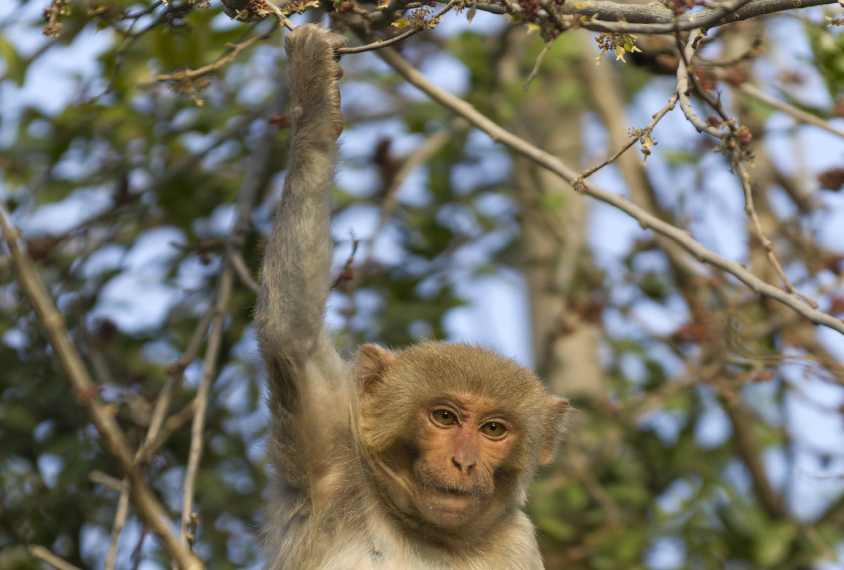
Bernd Rohrschneider / Science Source
THIS ARTICLE IS MORE THAN FIVE YEARS OLD
This article is more than five years old. Autism research — and science in general — is constantly evolving, so older articles may contain information or theories that have been reevaluated since their original publication date.
Researchers have developed a way to track the firing patterns of hundreds of neurons in a monkey’s brain as it moves. Researchers described the method Saturday at the 2016 Society for Neuroscience annual meeting in San Diego.
The method is based on two-photon calcium imaging, which can pick up the activity of hundreds of neurons at once in awake mice, rats, fruit flies and other small animals. In this technique, synthetic molecular sensors inserted into cells glow when exposed to calcium, which rushes into a neuron whenever it fires.
The researchers applied the method to rhesus macaques that had been trained to reach for colorful shapes on a screen. They focused on the activity of neurons in a brain region called the motor cortex, which controls movement.
They surgically removed a small part of the skull above the motor cortex and implanted a short metal cylinder with a transparent piece of silicone covering one end, creating a window into the brain. They then injected monkeys with a harmless virus that produces a calcium sensor called GCaMP only in neurons in the motor cortex.
Reaching out:
To prevent head movements, which could blur the microscope images, the researchers created a device that fixes a monkey’s head in place under the microscope, while allowing the rest of its body to move. They also applied gentle downward pressure onto the cylinder to further stabilize the brain, as slight shifts in its position can occur as blood flows.
When the monkeys reached toward the screen, the neurons responsible for the movement lit up more brightly than surrounding neurons. The researchers say they are training the monkeys to perform other arm movements, and plan to track the neural activity patterns accompanying those behaviors.
The same technique could be used in other areas of the monkey brain. “As long as you can express the GCaMP indicators in the brain, and as long as you can get optical access to that brain area, you could image any area in the brain,” says Xulu Sun, a graduate student in Krishna Shenoy’s lab at Stanford University in Palo Alto, California.
Researchers may be able to use the method to track neuron firing in real time in monkey models of autism, revealing the neurons underlying relevant behaviors.
For more reports from the 2016 Society for Neuroscience annual meeting, please click here.
By joining the discussion, you agree to our privacy policy.